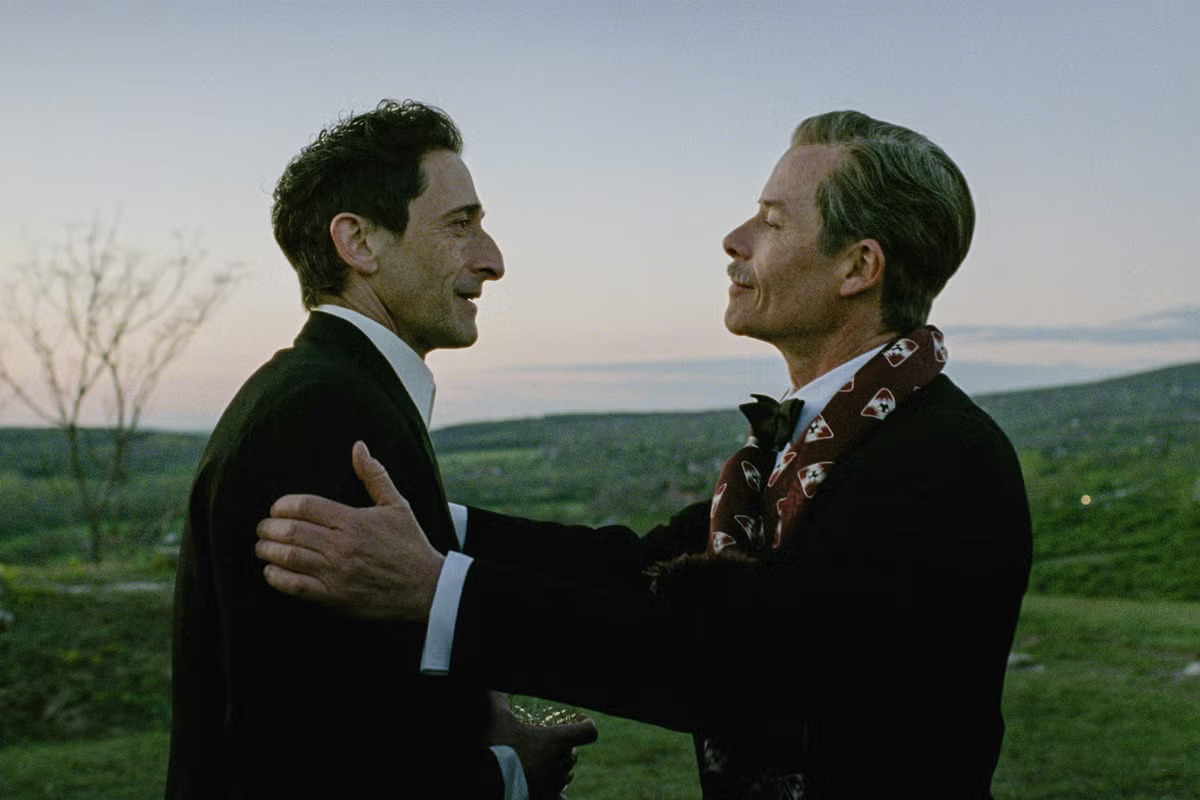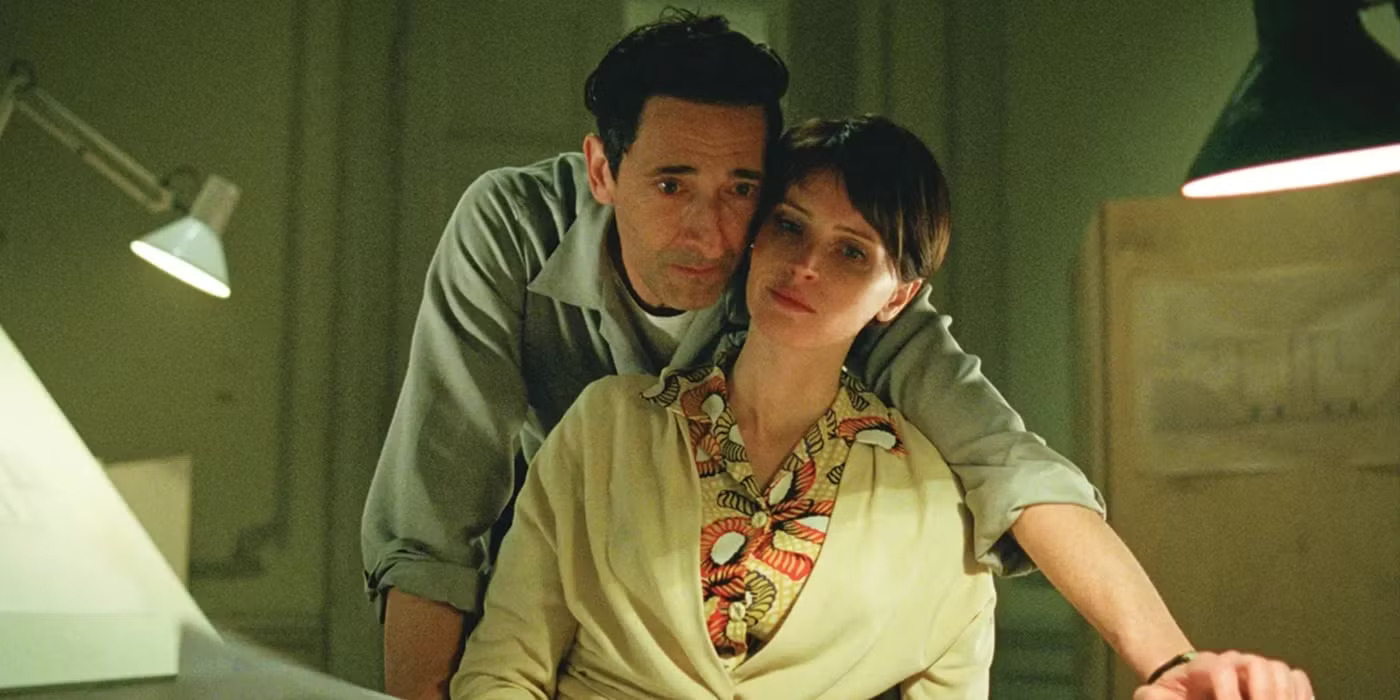The Brutalist (2024), directed by Brady Corbet, tells the story of László Tóth (Adrien Brody), a brilliant architect and Holocaust survivor who immigrates to the United States. László becomes entangled in a tumultuous relationship with the industrialist Harrison Lee Van Buren (Guy Pearce).
As László attempts to rebuild his life in America, he is forced to work for Van Buren, whose influence over him grows. Despite reuniting with his wife, Erzsébet (Felicity Jones), and niece, Zsófia (Raffey Cassidy), László’s frustrations with the exploitation of his past and his work continue to grow, culminating in a poignant conclusion with significant emotional depth.
The film is structured into two acts, with an intermission and a concluding epilogue set in 1980. In the epilogue, László is honored with a retrospective of his work in Venice. However, by this time, Erzsébet has passed away, and László is immobile and unable to speak.
His niece, Zsófia, delivers a speech at the gala, connecting László’s artwork to his experiences during the Holocaust. Zsófia’s statement about the importance of “the destination” echoes László’s earlier justification for his work with Van Buren, despite the moral complexities involved. This reflects the broader theme of how László’s work has been hijacked by others, denying him control over his own narrative.

The Irony of László’s Unspoken Truths
Zsófia’s interpretation of László’s statement about the destination versus the journey demonstrates a misunderstanding of his struggle. The film reveals that László’s journey of working under Harrison Van Buren was one filled with abuse and manipulation. It becomes evident that László’s focus on the destination was not to trivialize the journey but rather to explain his difficult compromises.
The film critiques the idea that art can heal the wounds of the past, emphasizing that László’s trauma and exploitation cannot be simply overlooked in favor of artistic achievement. This irony culminates in the presentation of a retrospective in which László is denied the opportunity to speak for himself.
A central figure in László’s trauma is Harrison Lee Van Buren, who exerts his dominance over László both professionally and personally. Van Buren sexually assaults László and remains largely unrepentant. The film leaves his fate ambiguous, as he disappears after the assault is publicly exposed.
Van Buren’s inability to comprehend a world where he does not control László reflects his lack of understanding of the architect’s purpose in creating a memorial for Holocaust survivors. Van Buren’s actions contribute to László’s disillusionment with the capitalist structures that underpinned his artistic career, further complicating the relationship between the two men.

Criticism of the Capitalist System in The Brutalist
The film presents a sharp critique of the American capitalist system, highlighting how László’s artistic legacy is shaped by external forces. László’s work is repeatedly manipulated by those in power, such as Van Buren and even Zsófia, who moves to Jerusalem, distancing herself from László’s values.
The film questions the notion of success in a system that prioritizes profit over personal integrity, showing how László’s artistry was undermined at every step. The movie suggests that László’s struggle for autonomy in his art is lost amidst the capitalist forces that commodify and exploit his work for their own purposes.
The final scene of The Brutalist is underscored by the song “One for You, One for Me,” which poignantly critiques the capitalist system. The song implies that artists eventually receive a personal project after years of serving capitalistic interests, but László never receives his own redemption.
Instead, his legacy is marred by the abuses he suffered, and his work is co-opted by others for their own agendas. Ultimately, the film posits that while László will be remembered for his artistic achievements, his true identity and beliefs will remain obscured by the forces that exploited him, demonstrating that greatness does not necessarily equate to justice.



